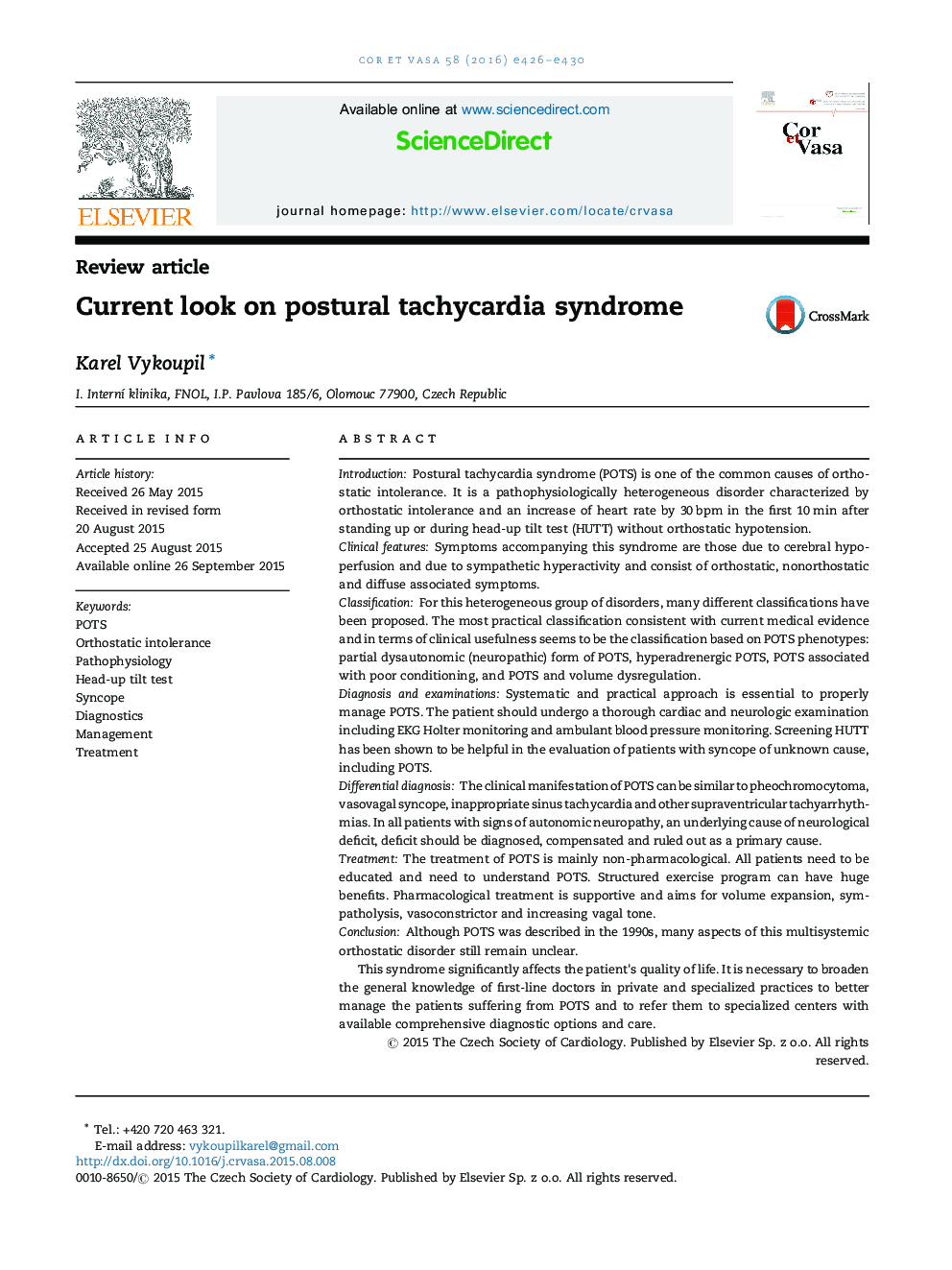| Article ID | Journal | Published Year | Pages | File Type |
|---|---|---|---|---|
| 2732971 | Cor et Vasa | 2016 | 5 Pages |
IntroductionPostural tachycardia syndrome (POTS) is one of the common causes of orthostatic intolerance. It is a pathophysiologically heterogeneous disorder characterized by orthostatic intolerance and an increase of heart rate by 30 bpm in the first 10 min after standing up or during head-up tilt test (HUTT) without orthostatic hypotension.Clinical featuresSymptoms accompanying this syndrome are those due to cerebral hypoperfusion and due to sympathetic hyperactivity and consist of orthostatic, nonorthostatic and diffuse associated symptoms.ClassificationFor this heterogeneous group of disorders, many different classifications have been proposed. The most practical classification consistent with current medical evidence and in terms of clinical usefulness seems to be the classification based on POTS phenotypes: partial dysautonomic (neuropathic) form of POTS, hyperadrenergic POTS, POTS associated with poor conditioning, and POTS and volume dysregulation.Diagnosis and examinationsSystematic and practical approach is essential to properly manage POTS. The patient should undergo a thorough cardiac and neurologic examination including EKG Holter monitoring and ambulant blood pressure monitoring. Screening HUTT has been shown to be helpful in the evaluation of patients with syncope of unknown cause, including POTS.Differential diagnosisThe clinical manifestation of POTS can be similar to pheochromocytoma, vasovagal syncope, inappropriate sinus tachycardia and other supraventricular tachyarrhythmias. In all patients with signs of autonomic neuropathy, an underlying cause of neurological deficit, deficit should be diagnosed, compensated and ruled out as a primary cause.TreatmentThe treatment of POTS is mainly non-pharmacological. All patients need to be educated and need to understand POTS. Structured exercise program can have huge benefits. Pharmacological treatment is supportive and aims for volume expansion, sympatholysis, vasoconstrictor and increasing vagal tone.ConclusionAlthough POTS was described in the 1990s, many aspects of this multisystemic orthostatic disorder still remain unclear.This syndrome significantly affects the patient's quality of life. It is necessary to broaden the general knowledge of first-line doctors in private and specialized practices to better manage the patients suffering from POTS and to refer them to specialized centers with available comprehensive diagnostic options and care.
